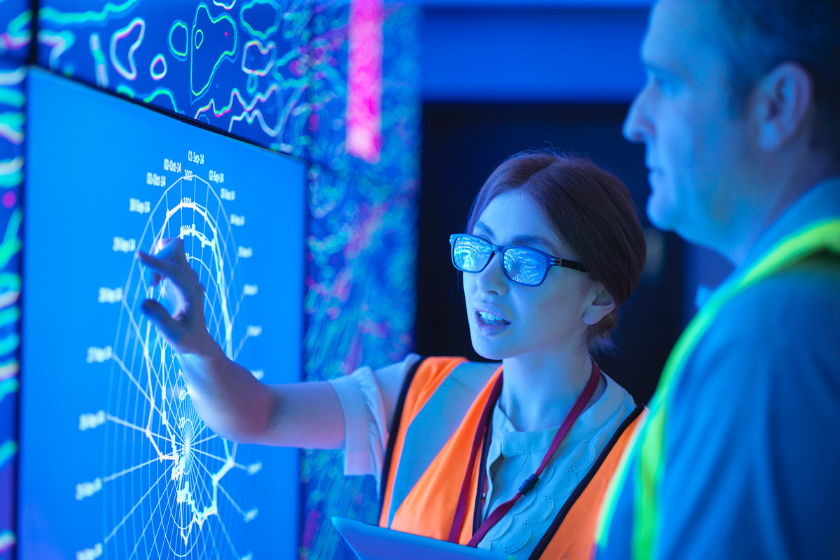In a world where technological progress is advancing at an ever more rapid pace, it is essential for the processes facilitating these changes to become faster and more productive, more efficient, secure and transparent.
Digitalisation is a crucial path engineers looking to achieve those gains are turning down, and according to one expert, the advantages to be gained from automating processes in this manner are transforming in important ways.
Speaking to create during Engineers Australia’s Climate Smart Engineering (CSE23) conference, which was supported by Siemens, Axel Lorenz, Siemens AG CEO of Process Automation, said that automation would play a vital role in decarbonisation and sustainability efforts.
“Everybody is talking about sustainability, decarbonisation [and] hydrogen,” he said. “All of that needs automation, and in most of the cases, even process automation.
“In order to drive sustainability and decarbonisation, what you really need is digitalisation.”
Digitalisation is important to, for instance, developing hydrogen energy or implementing circular economy practices into a business.
“We are building plants based on technology that may have been available for decades already, but we are building plants where we don’t have the experience to run them,” Lorenz said.
“If you look at the hydrogen business — green hydrogen — the electrolysers we’re using today are pretty new. The electrolysers that we installed in plants five years ago may not be available again because the innovation in this industry is so fast.
“This requires completely new innovation cycles and tools. We need very rapid, very fast development and integration, and that means that the plants we’re building are first-of-their-kind plants.”
Digitalisation, he said, helps his customers who implement these technologies catch up: training new staff and optimising their output.
The form this digitalisation takes could be, for instance, a metaverse model of the technology or a digital twin.
“We have to build digital twins of the product, or the process at the plant or the production,” he said.
“We have to use those digital twins and enhance them with the information we get out of the production and the process of the production over the entire life cycle in order to be able to help our customers optimise the operations they have [so they can] reduce resources and improve their carbon footprint.”
Exports and artificial intelligence
One opportunity this represents for Australia is to go beyond efforts to address domestic carbon emissions and begin bringing them down across the world by developing technology that can be exported to other markets.
“Based on the increase of energy prices, a lot of our customers in Europe are very focused on their own process, their own plants and what they need to do,” Lorenz said.
“They are looking for partners to help them to integrate this new technology into repeatable solutions for recurring requirements and challenges that they have.
Artificial intelligence and large language models represent another opportunity for gains from digitalisation.
Lorenz sees large language models as potentially having a big impact on the work of engineers.
“Going towards digitalisation will increase the workload, but the number of people who are available to do that workload is decreasing,” he told create.
“It will change the way we’re going to develop and we’re going to engineer, but it is necessary that we use that, because [of] the amount of work we’re going to see in order to drive decarbonisation and the changes in the industry in front of us.”
Staying safe
Automation will also introduce a level of integration across technological platforms, Lorenz said, that will make concerns such as cybersecurity more important to an engineer’s job profile.
“We have to protect ourselves; we need more communication, and industry communication is different from the standard communication technology that we have,” he said.
“We need determinism [and] redundancies, and most of all, we need cybersecurity at all levels … cybersecurity which is very operational.”
That particularly matters in process automation, where risks can have ramifications at a massive scale.
“The impact that we’re seeing is that companies get shut down and there’s a huge financial and production impact,” Lorenz said.
“The difference between factory automation and process automation is that, for a factory, the safe state is when you shut everything down.
“You better not do that in process automation.”
And the role of the engineer in this transforming landscape will be to bridge the virtual possibilities opened up by digitalisation with the real-world problems that must be solved.
“All that technology is going to help us to implement the domain know-how into the virtual world,” Lorenz said.
“It’s going to be the engineers who will be in the centre of it, because someone has to understand: What are the technologies available? What could they do to the process and the product and the production? And how can we combine that domain know-how with the technology?”
